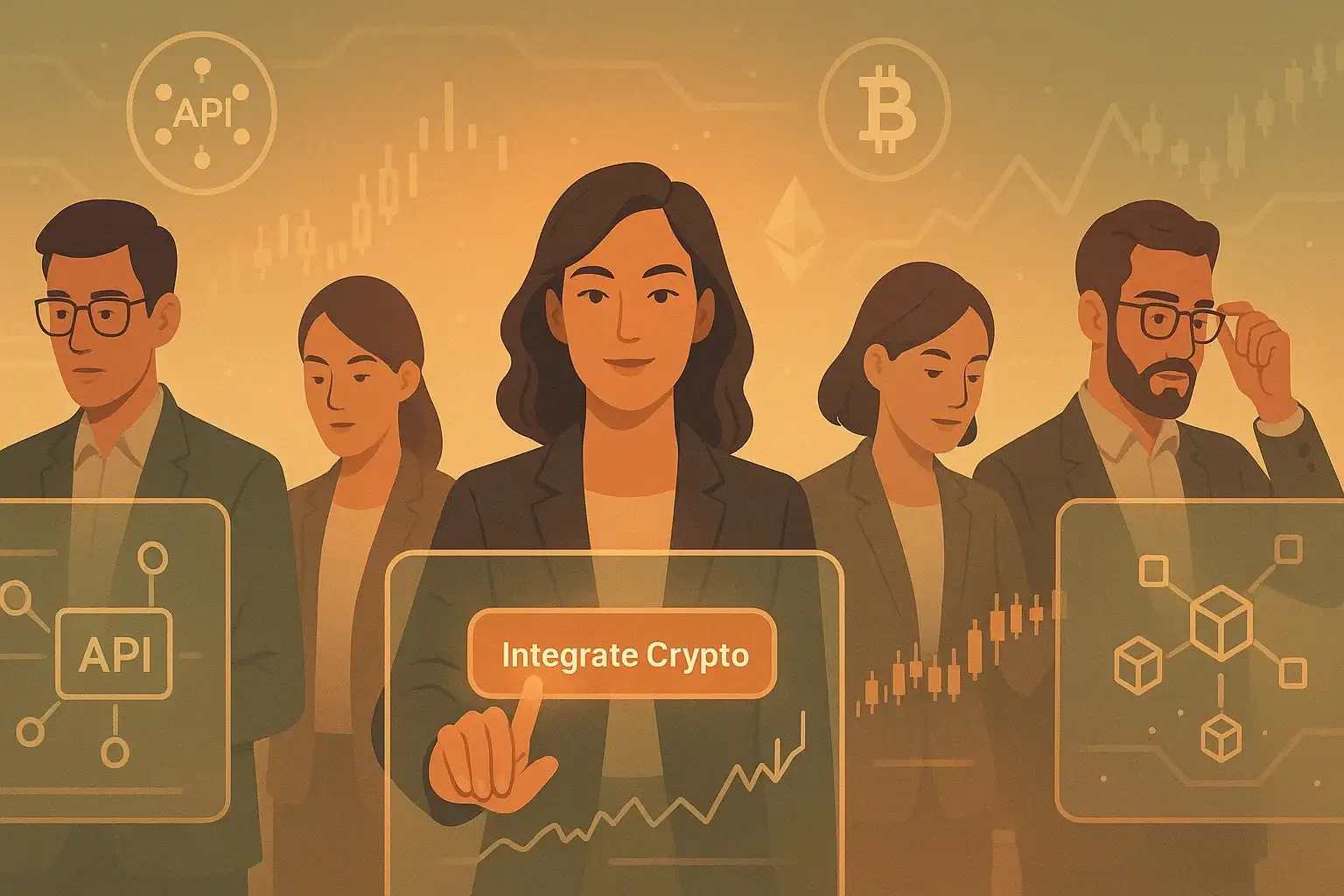
Top 5 DePIN Projects Transforming Transport and Logistics
Introduction
The development of blockchain technology beyond finance has long been anticipated and one of the web3 projects to showcase this growth is DePIN {Decentralized Physical infrastructure Networks} projects.
When discussing the recent explosive growth in Web3, one cannot fail to mention DePIN (Decentralized physical infrastructure Networks). DePIN projects have reshaped how people interact and solve real-life problems by leveraging blockchain technology.
In essence, the incorporation of DePIN in blockchain into industries such as transportation and logistics, telecommunication, etc., has increased productivity while fostering a decentralized ecosystem where communities manage these physical infrastructures without interference from middlemen or central authorities.
This article is tailored towards our understanding of the meaning, purpose and features of DePIN projects. In addition, we will illustrate by outlining and explaining 5 major DePIN projects transforming transports and logistics.
What are Decentralized Physical Infrastructure Network Projects [DePIN]?
In very simple terms, DePIN are real-world infrastructures such as wifi, maps, energy grids etc that are powered and managed by communities in a decentralized manner, leveraging blockchain technology. In other words, DePIN are real-life projects that are built and managed by a community of persons using blockchain technology.
As a result of its decentralized nature, centralized authorities or companies do not control these infrastructures, rather they are built and controlled by individuals who contribute resources and get rewarded with cryptocurrencies in proportion to their contributions.
The ultimate benefits are services are made cheaper, transparent and inclusive and everyone can choose and be a part of any project.
To clarify further, let’s take for instance, Uber services are no longer handled by the owners of the company, rather they are handled by a community of individuals who leverage blockchain technology to contribute resources such as vehicles, charging stations, decentralized navigation and mapping data etc. to maintain and ensure smooth services for network users and in turn gain rewards which serve as tokenized incentives.
It is okay to wonder what elements make up these DePIN projects after you have read about their meaning and manner of operation. The next section will educate us on 5 major features of DePIN projects.
Features of DePIN
Numerous features distinguish DePIN projects from other web3 projects and at the same time showcase the similarities they share. These features make DePIN projects the Innovation we look forward to wildly adopting shortly. We will be listing and explaining 5 major features and they are as follows.
Decentralization
DePIN projects derive their functionality and structure from Blockchain technology, therefore the feature of Decentralization is inevitable. DePIN projects are monitored, built and controlled by a network of contributors from different sources. This means that central control from big business owners is eliminated.
Accordingly, these networks contribute resources to make every project a success and they are incentivized and rewarded with valuable tokens in the form of Cryptocurrencies. This system promotes transparency amongst contributors and in all, encourages a community-driven process.
Tokenization
In the operation and control of DePIN projects, community participants contribute resources to see the success of every project. They contribute resources such as hardware, data, services, storage, energy and the like.
As a result, they are rewarded with tokens in appreciation for their hard work. Furthermore, these tokens also serve as incentives to encourage more participation and ensure fair competition amongst contributors.
Tokens also serve as a means of governance to give every participant a voice while operating the network. With tokens, contributors are encouraged to engage and adopt the system more due to the power of governance vested in them.
Transparency and Security
Owing to its connection with blockchain technology, activities and transactions on DePIN projects are publicly recorded and documented. With everyone able to view it, there is a substantial measure of security and transparency among participants. In essence, all transactions are tamper-proof and visible to the entire contributors.
Cost-Effective and Scalability
DePIN projects are cost-effective as a result of the elimination of middlemen and central infrastructure providers. Therefore cost is reduced because participants contribute resources for the creation of any project on the technology.
In the issue of scalability, DePIN projects sustain a growing user base and evolving applications as their infrastructure ensures speed in transactions and other activities. With this, there's inclusivity, good user experience and more user engagement, allowing a broader range of users to access necessary infrastructure.
Community-Driven Development
DePIN stands out from other conventional infrastructures because they're controlled by a community of individuals who adopt its system.
This community-driven practice encourages innovation and resilience, as participants are invested in the development and maintenance of the infrastructure.
These features properly communicate the functionality and positive outcomes. Aside from the above listed, there are many more exciting and beneficial features, however, the next section will educate us on 5 major DePIN projects, revolutionising transportation and logistics Industries.
Top 5 DePIN Projects Transforming Transport and Logistics
1. Helium Network:
Helium Network is a DePIN project. It is better illustrated as a decentralized wireless network that enables Internet of Things (IoT) devices to connect to the Internet.
One would surely inquire into its workability, therefore it works by allowing individuals (called "Hotspot Hosts") to set up small, low-power wireless devices called Hotspots. These Hotspots provide coverage for IoT devices to function in exchange for cryptocurrency rewards.
Let's create an illustration. Imagine you’re living in a city and want to track the air quality in your area and there are many small, battery-powered sensors placed in various locations (like street corners, parks, or neighbourhoods) that gather air quality data.
These sensors need an internet connection to send their data to a cloud service, but they don’t need high-speed internet—just simple, low-power connectivity over long distances.
This network is powered by blockchain technology, making it different from traditional telecom networks. Helium allows community members to participate in building and expanding the network while earning Helium (HNT) tokens as incentives.
2. HiveMapper:
The second on our outline is HiveMapper. This is simply a decentralized mapping network built on blockchain technology that enables users to collect and update map data. These users collect and update map data through community-driven contributions.
HiveMapper has disrupted traditional mapping services like Google Maps, which depends on centralized teams for data collection and updates.
Furthermore, HiveMapper allows everyday people, called "contributors", to gather real-time map data using simple devices like dashcams. In turn, contributors are rewarded with HONEY tokens for their efforts.
3. DIMO:
DIMO (Decentralized Intelligent Mobility Operations) is a decentralized vehicle data network. It allows vehicle owners to share data and contribute to a community-driven ecosystem.
DIMO uses blockchain technology to ensure that data shared between vehicles, owners, and service providers is secure, transparent, and tamper-proof. In addition, DIMO enables users to own and control their vehicle data while also earning rewards for contributing valuable data.
Unlike traditional vehicle data systems that are controlled by automotive manufacturers or third-party companies, DIMO gives individuals and fleet operators more control over the data generated.
4. Power Ledger:
Powerledger is a blockchain-based platform that enables decentralized energy trading. In other words, this platform allows consumers, businesses, and producers of energy (including those generating renewable energy) to trade electricity directly with one another, without the need for traditional utility companies or intermediaries.
Power ledger leverages blockchain and smart contract technology to securely record and validate energy transactions, which ensures transparency, efficiency, and fairness.
Also, the system is designed to allow prosumers (those who both produce and consume energy) to sell excess energy directly to others. In essence, the decentralized system removes the reliance on centralized utilities, enabling users to choose their energy suppliers and even create energy marketplaces.
5. Drife
Drife is another Decentralized Physical Infrastructure Networks (DePIN) project in mobility that uses blockchain to create decentralized alternatives to traditional transportation and logistics networks. It is equally a decentralized ride-hailing platform, utilised by drivers to gain more control over mobility.
In essence, Drife totally eliminates the dependence on central companies such as Uber, lyft etc, due to its decentralised infrastructure. Drife goes further to proffer so many benefits for drivers who participate in its usage and they are as follows; fair earnings, publicity of the driver’s performance and ratings etc.
In addition, drive also uses incentives such as DRF tokens for riders who completed trips, and referral bonuses for bringing in new users. This in turn, drives engagement and publicity.
Conclusion
Blockchain technology has housed so many projects and more are being created as the days go by. DePIN projects showcase the eagerness to revolutionize all industries.
DePIN is reshaping industries, disrupting traditional methods of doing things while leveraging blockchain technology.
Ultimately, DePIN projects try to democratize access to infrastructures and at the same promote productivity and efficiency in various industries.
There is equally a rapid adoption of these infrastructures as they continue to empower individuals and businesses.
https://youtu.be/qmw5DorMr6E?si=ydImJH0mD7okM4AE
On-Chain Media articles are for educational purposes only. We strive to provide accurate and timely information. This information should not be construed as financial advice or an endorsement of any particular cryptocurrency, project, or service. The cryptocurrency market is highly volatile and unpredictable.Before making any investment decisions, you are strongly encouraged to conduct your own independent research and due diligence
Tags :

0 Comments
Show More

Revolut’s 2017 “experiment” is now the fintech standard. Neobanks, marketplaces & apps are all adding crypto to boost revenue, retention & user growth.

Circle USDC, led by Nima Elmi, holds early talks with the Nigeria's Ad Hoc Committee on Cryptocurrency.

Volatility drives trader behavior. See how major exchanges use targeted competitions to channel market chaos into structured trading volume.
On-Chain Media is an independent, reader-funded crypto media platform. Kindly consider supporting us with a donation.
bc1qp0a8vw82cs508agere759ant6xqhcfgcjpyghk
0x18d7C63AAD2679CFb0cfE1d104B7f6Ed00A3A050
CBaXXVX7bdAouqg3PciE4HjUXAhsrnFBHQ2dLcNz5hrM
Contains the last 12 releases